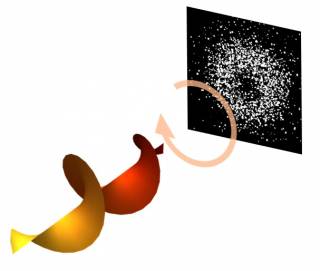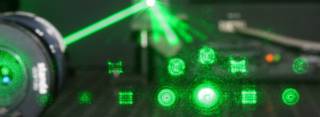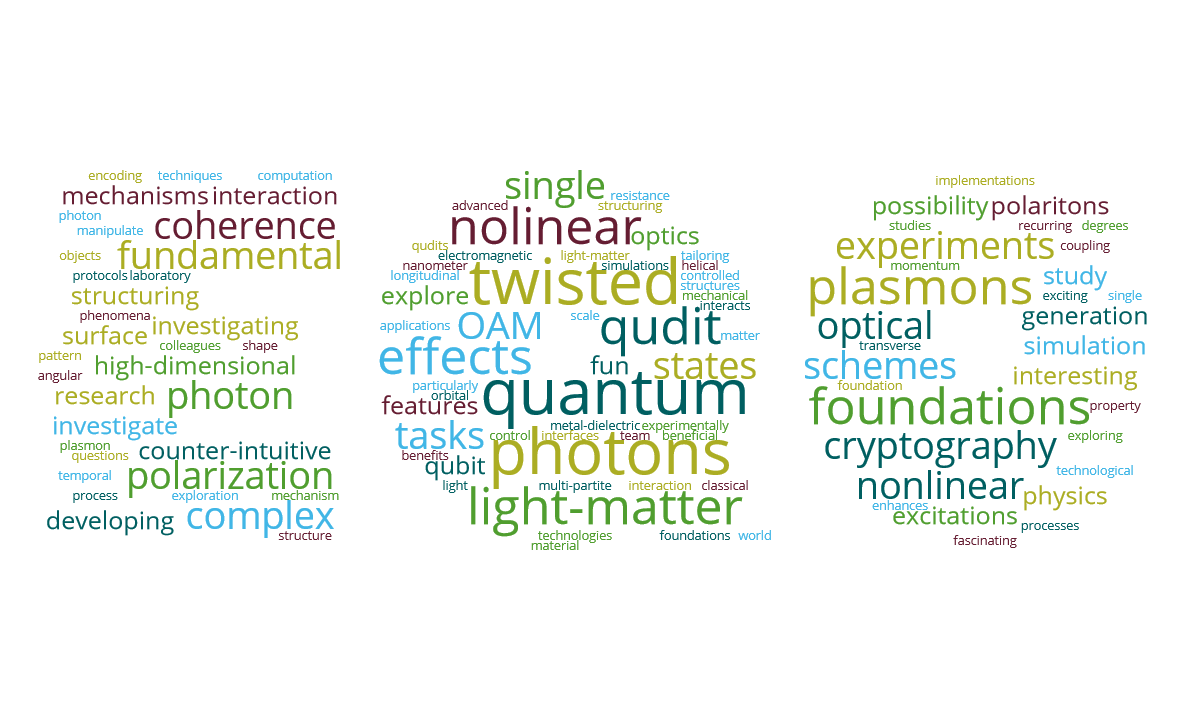Our research ranges from exploring the foundations of quantum physics to developing novel tools and applications for next generation quantum technologies. In addition, we also investigate nonlinear optical effects and quantum plasmonics. The recurring theme of most of the research being the exploration of the complex transverse structures of the photons. We study their special features to address fundamental questions and utilize their benefits for classical and quantum information schemes.
Structuring Light for High-Dimensional Quantum Optics

Structuring single photons offers the possibility to perform fundamental tests of physics and enhance quantum information schemes. One particularly fun and useful property is the orbital angular momentum (OAM), which is related to a helical phase front, hence the names twisted photons (see figure). In addition, photons can have an arbitrary complex polarization pattern and a complex shape in the temporal (longitudinal) domain, i.e. they can be structured in all their degrees of freedom.
While this is already interesting from a fundamental point of view, it also enhances quantum information tasks through the possibility to have laboratory implementations of high-dimensional quantum states. In contrast to usual qubit encoding, these so-called qudits can carry more information, have increased noise resistance and are extremely enjoyable to study.
We are developing novel ways to experimentally generate, manipulate and measure high-dimensional photonics quantum states. Using these advanced techniques, we investigate counter-intuitive quantum features such as multi-partite high-dimensional entanglement and test them in novel quantum communication and cryptography protocols as well as simple quantum simulation and computation tasks.

Light-Matter Interaction on the Single Photon Level
When light interacts with matter, interesting phenomena appear on the quantum level. Amongst many exciting effects are, for example, the conversion of one photon into two in a nonlinear optical process or the excitations of single surface plasmon polaritons. By structuring the photons or the material (or both) as precise as current technological limits allow, the interactions can be controlled and used to explore novel interaction mechanism and quantum interference effects.
We are investigating how the structure of photons can help in custom tailoring nonlinear optical interaction mechanisms. Our focus lies on the generation of novel quantum states, that we can use to realize fascinating studies on quantum foundations and quantum information schemes.
In addition, we study the beneficial use of so-called surface plasmon polaritons (electromagnetic excitations at metal-dielectric interfaces) in quantum experiments. As such, single plasmons are quantum mechanical objects whose control and coupling mechanisms we are investigating in novel interference measurements on the nanometer scale and quantum level.
For many of these tasks, we team up with colleagues from all around the world (incomplete list in a random order):
- Marcus Huber and his group (IQOQI Vienna, Austria)
- Ebrahim Karimi and his group (University of Ottawa, Canada)
- Enno Giese (University of Ulm, Germany)
- Bob Boyd and his group (University of Ottawa, Canada & University of Rochester, USA)
- Israel de Leon and his group (Tecnológico de Monterrey, Mexico)
- Marcin Wiesniak and his group (University of Gdansk, Poland)
and many more….
Our most recent publications on these topics can be found here.
Check out also the following papers for more information on structured light and high-dimensional quantum information.

